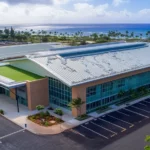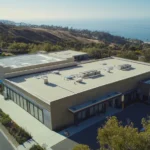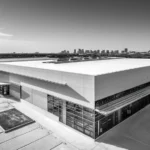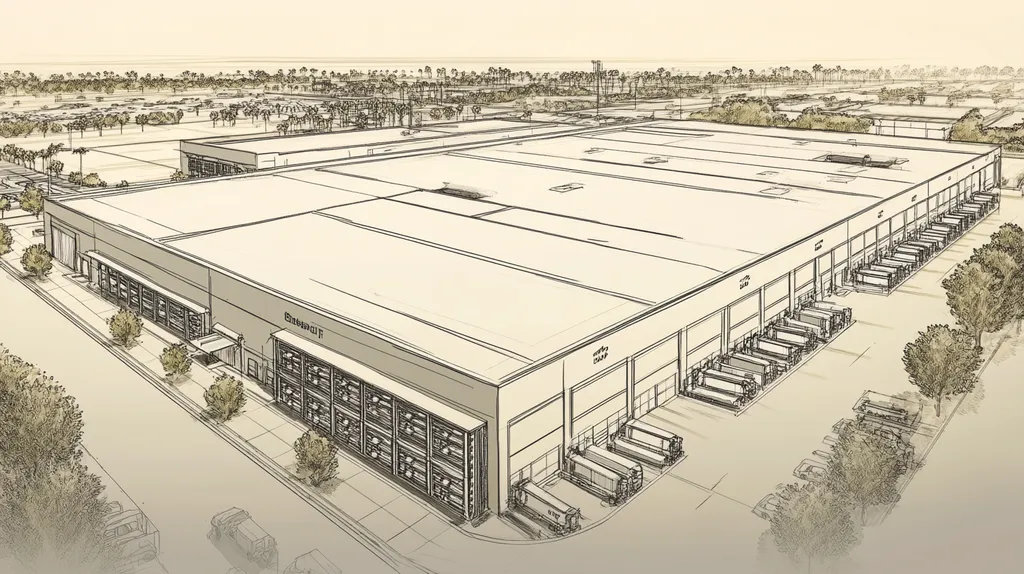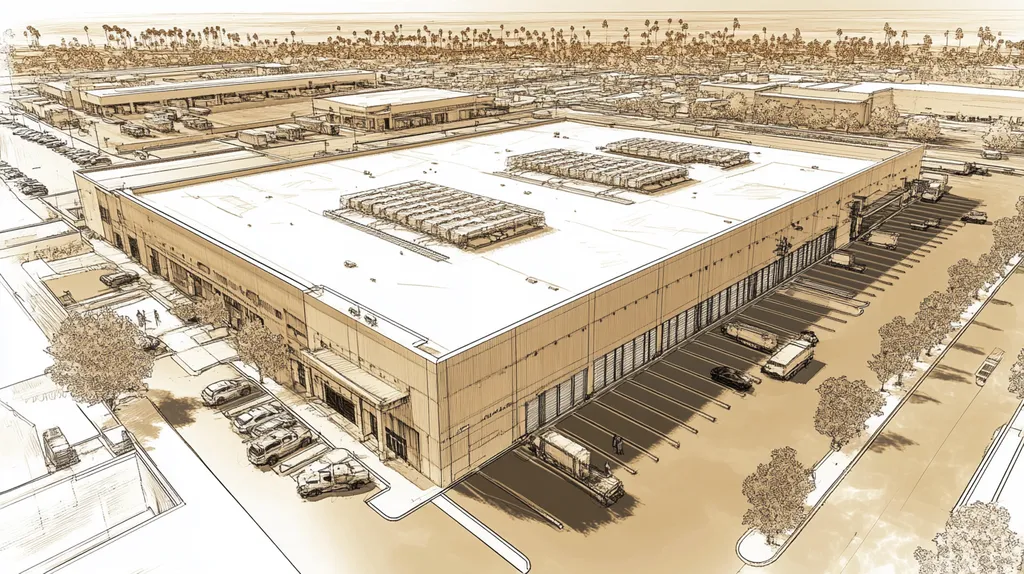Commercial property owners lose millions annually due to misguided decisions about skylights, with energy costs skyrocketing up to 35% from poor installation and design choices.
The integration of skylights into commercial roofing systems represents a critical intersection of design, functionality, and energy efficiency that directly impacts operational costs and tenant satisfaction.
By examining common misconceptions, evaluating practical implications, and exploring evidence-based solutions, property managers can transform skylights from potential liabilities into valuable assets that enhance building performance and occupant wellbeing.
SECTION 1: COMMON MISCONCEPTIONS
Misunderstandings about skylights can severely compromise the integrity of commercial roof designs, leading to unexpected repairs and inefficiencies. Many property owners wrongly assume that adding skylights will invite leaks, be purely decorative, or escalate energy expenses. By addressing these misconceptions, we can harness the true potential of skylights to enhance roof performance and overall building efficiency. This section aims to shed light on these prevalent beliefs and their impacts on effective roofing strategies.
Skylights Increase Roof Leakage
A widespread misconception is that skylights increase the likelihood of roof leaks. This belief often arises from instances of improperly installed skylights that indeed resulted in leaks. However, when installed correctly using high-quality materials, skylights can be made weather-tight and effective.
Studies reveal that the risk of water intrusion is substantially decreased when skylights are managed by skilled professionals. Furthermore, advancements in sealing techniques and materials bolster their resistance to leaks.
Routine maintenance is crucial for leak prevention as well. Regular inspections and timely repairs can significantly extend the lifespan of skylights, ensuring they continue to protect the roof structure.
For property owners, collaborating with qualified roofing experts who understand the intricacies of skylight integration is essential. This proactive approach ensures that installations are executed flawlessly, reducing future risks.
Skylights Are Only for Aesthetic Purposes
Another common belief is that skylights exist solely for aesthetic enhancement. While the beauty they add to a building is undeniable, skylights also play a vital role in the functionality of commercial spaces. They significantly boost natural daylight, which lessens the reliance on artificial lighting during daylight hours.
Research indicates that environments filled with natural light can improve employee productivity and lower instances of eye strain. Additionally, skylights create a more inviting atmosphere, especially in customer-facing businesses.
Moreover, when designed thoughtfully, skylights offer ventilation benefits, promoting better air circulation and regulating indoor temperatures. Therefore, skylights provide practical advantages that can lead to energy savings and enhanced occupant comfort.
When conceptualizing a roof design, property owners should consider how effectively skylights can enhance both the aesthetic appeal and functional capacity of their buildings. This multifaceted advantage is too significant to overlook.
Skylights Are Not Energy Efficient
Some property owners fear that skylights will inflate energy costs, mistakenly believing they are less efficient than conventional lighting. In truth, well-designed skylights can tremendously improve a building’s energy efficiency. By harnessing natural light, they reduce the need for electrical lighting, ultimately lowering energy expenses.
Modern skylights are often fitted with energy-efficient glazing that minimizes heat loss and solar heat gain, making them practical across various climates. Smart design choices, such as utilizing diffusing lenses, can alleviate issues like glare and overheating.
Data from energy audits frequently demonstrate that buildings with well-placed skylights consume less overall energy compared to those without. This means property owners can achieve cost savings while also advancing sustainability initiatives.
The message is clear: integrating energy-efficient skylights into roof designs not only dispels the myth of inefficiency but actively promotes a more sustainable and cost-effective building environment. (source: Design Components)
SECTION 2: PRACTICAL IMPLICATIONS
The decision to integrate skylights in commercial roofing systems goes beyond mere design. It plays a crucial role in improving operational efficiency and tenant comfort. Research shows that buildings benefiting from natural light can lower energy costs by up to 20%. As property owners evaluate their roofing options, it’s essential to grasp the multifaceted effects skylights can have—from lighting needs to HVAC efficiency and employee productivity. This section will explore how these factors are influenced by the thoughtful inclusion of skylights.
Impact on Natural Lighting Needs
Natural light is a cornerstone of a healthy workplace. Commercial buildings that integrate skylights can dramatically enhance the quality of light within their spaces.
Research indicates that access to natural lighting boosts employee mood and alleviates eye strain, which is vital for productivity in office environments. This can contribute to both reduced absenteeism and heightened employee engagement.
To maximize the benefits, property managers should carefully consider the placement and design of skylights. Key factors such as orientation, size, and glazing type must be addressed.
Overlooking these details could lead to inadequate lighting, which in turn increases reliance on electrical lighting and consequently raises energy consumption.
Effects on HVAC Systems and Energy Costs
The presence of skylights has a significant impact on HVAC system performance. When designed effectively, skylights can help manage indoor temperatures by leveraging thermal gain from natural sunlight.
This strategic design can lead to lower heating costs during winter months and reduced cooling expenses in the summer. However, improper implementation might create challenges for HVAC systems.
Excessive heat gain during warmer months can overwork cooling systems, resulting in elevated energy costs and discomfort for occupants. A careful balance is crucial to mitigate these risks.
Incorporating automated shading systems can also help manage glare and thermal gain, allowing for both optimal energy efficiency and plentiful natural light.
Influence on Workplace Productivity
The effect of skylights on workplace productivity is both significant and often overlooked. Enhanced exposure to natural light correlates with improved focus and cognitive functioning.
Studies reveal that employees who have access to natural light report higher job satisfaction and overall well-being, which directly enhances their performance.
Additionally, companies that maintain well-lit workspaces experience lower employee turnover rates, saving on hiring and training costs.
However, strategic planning is essential; the introduction of skylights must avoid potential distractions or glare issues that could negate the productivity benefits.
SECTION 3: COST OF MISINFORMATION
The financial impact of misconceptions surrounding skylights in commercial roofing can be monumental. Inaccurate installation techniques not only lead to financial pitfalls but can escalate operational costs by as much as 25% over a building’s lifecycle. Property owners must tackle these challenges head-on, as neglecting even the smallest details can result in significant long-term expenses.
Financial Consequences of Poor Installation
Inadequate skylight installation doesn’t just create the potential for water leaks; it can trigger a cascade of financial repercussions. A leak—from poorly sealed skylights—might cause extensive damage to interiors, requiring costly repairs and leading to operational downtime.
Using substandard materials to save on initial installation costs amplifies these risks. For instance, cheaper, low-quality skylights often fail earlier, necessitating frequent replacements that can quickly outstrip any initial savings. Ultimately, those who cut corners today may find themselves drowning in repair bills tomorrow.
On the other hand, properly installed skylights can enhance overall building performance and efficiency. By adhering to best practices in installation, property owners can mitigate unforeseen expenses and safeguard their long-term financial stability.
In essence, when misinformation leads roofing decisions astray, property owners may be left with unnecessary burdens. Investing in proper installation paves the way for significant cost savings and enhances building performance over time.
Energy Waste Due to Inefficient Skylights
Though skylights promise to illuminate spaces with natural light, poorly designed or inefficient products can lead to serious energy waste. For instance, inadequately insulated skylights may result in substantial heat loss during winter and unwanted heat gain in summer, directly inflating energy bills.
Research indicates that well-designed skylights can reduce lighting energy costs by 20-30%. However, the flip side reveals that inefficient skylights may increase energy consumption by as much as 15%. Misconceptions about skylight efficiency can steer property owners toward visually appealing options that fail to deliver on performance.
Neglecting to assess energy efficiency ratings and proper positioning often leads to excessive dependence on artificial lighting and overworked climate control systems. This not only raises operational costs but also undermines sustainability initiatives, contributing to a larger carbon footprint and deterring eco-conscious investors.
Selecting the right skylight can greatly influence energy use in a building. Property owners must remain vigilant against misleading information, ensuring they strike the perfect balance between aesthetic appeal and energy efficiency for long-term financial and environmental benefits.
Loss of Property Value
Underestimating the multifaceted impact of skylights can lead to significant depreciation in property value. Buildings with ineffective skylights or botched installations may face visibility issues and safety hazards, causing potential buyers to look elsewhere.
Conversely, research shows that well-designed skylights can increase a building’s market value. Properties that fall victim to misinformation, especially regarding financial disclosures, risk losing their appeal to prospective investors. Faulty skylight applications damage the perceived quality of the entire roofing system.
This perception is vital when it comes to drawing tenants or buyers. Properties lacking skylight integrity might not pass inspections, halting sales and leasing processes. Additionally, the costs associated with fixing skylight-related issues can further diminish a property’s value.
In today’s competitive market, staying informed about skylight efficacy is crucial. With the right knowledge, property owners can make educated decisions, safeguarding their investments and potentially increasing property value significantly.
SECTION 4: REALITY CHECK
As commercial buildings grapple with rising energy costs and heightened sustainability expectations, the integration of skylights in roof design becomes increasingly critical. Research shows that skylights can cut the need for artificial lighting by up to 75%, which translates to significant energy savings. But property owners and facility managers must weigh these advantages against the challenges of installation and ongoing maintenance costs. This section delves into real-world case studies, assesses actual energy savings, and highlights the architectural benefits of skylights to inform sound decisions.
Actual Energy Savings from Skylights
Energy efficiency remains a top priority for commercial properties, and skylights present an excellent solution. Research indicates that strategically placed skylights can significantly reduce lighting costs, with a U.S. Department of Energy study revealing annual savings of up to $250 for every 1,000 square feet of roof area.
Additionally, skylights enhance a building’s overall energy rating, aligning with eco-friendly initiatives, and may offer financial benefits like tax credits. When considering new designs or retrofits, the potential for energy savings stands as a compelling argument for incorporating skylights.
However, to realize these savings, property owners must also factor in initial installation and ongoing maintenance costs. Conducting a thorough cost-benefit analysis is essential to ensure that skylight installation will lead to long-term savings.
In short, while the energy savings tied to skylights can be considerable, careful evaluation of all associated costs is vital for successful implementation.
Real-World Examples of Successful Installations
Examining successful skylight installations provides valuable lessons in best practices and outcomes. For example, a corporate office in California that installed skylights in their open-plan workspace recorded a remarkable 30% cut in energy costs, while employees reported increased satisfaction due to better natural light exposure.
Another noteworthy case involved a manufacturing facility that incorporated tubular skylights into its overall design. Channeling natural daylight into the workspace allowed the company to dramatically reduce its reliance on artificial lighting, resulting in an annual savings exceeding $20,000.
These instances exemplify the financial benefits of skylights and their ability to foster healthier working environments. Access to natural light is linked to improved employee productivity and well-being.
Such real-world successes underscore the importance of careful planning and execution. Employing experienced contractors can help optimize skylight placement for peak energy efficiency and user comfort.
Architectural and Design Benefits
Beyond energy performance, skylights offer significant architectural advantages. They enhance the aesthetic appeal of a building, creating visually striking spaces that effectively utilize natural light. This design feature can become a key differentiator in marketing properties.
Skylights also improve ventilation and indoor air quality. Operable skylights facilitate passive cooling, reducing dependence on mechanical cooling systems. This dual functionality adds substantial value beyond simple illumination.
Current design trends favor open, airy spaces, with skylights providing a practical means to achieve this vision. Many architects are successfully integrating skylights into green roofs, offering both attractiveness and sustainability.
Incorporating skylights into commercial roofs not only addresses functional needs but also enhances overall property value. As sustainability continues to gain importance, understanding these architectural benefits is essential for property owners considering roof enhancements.
SECTION 5: EVIDENCE-BASED ALTERNATIVES
As commercial property owners and facility managers face rising energy costs and increasing demands for sustainability, the selection and installation of skylights become critical. Research indicates that well-placed skylights can reduce the need for artificial lighting by up to 80%, resulting in substantial savings on energy bills. By understanding how to choose the right skylight types, optimize their placement, and leverage advanced features, buildings can enhance performance and occupant satisfaction.
Choosing the Right Type of Skylight
Selecting the correct skylight material and design is essential to unlock their full potential. While traditional glass skylights are visually appealing, they can create challenges such as heat loss during winter and heat gain during the summer months. Alternatives like polycarbonate or fiberglass skylights offer better insulation and UV protection, making them a smarter choice in many climates.
Operable skylights are another effective option, allowing for natural ventilation alongside daylight. This feature not only enhances indoor air quality but helps regulate the building’s temperature, reducing dependence on HVAC systems.
When considering skylight types, property owners must account for local climate conditions and building codes. In areas facing severe weather, impact-resistant skylights are crucial for ensuring durability and long-term performance.
Ultimately, the right skylight selection aligns energy-efficiency goals while fostering a healthier indoor environment. This consideration can positively affect productivity and well-being among occupants.
Strategic Placement for Maximum Benefit
Skylight placement is a game-changer for energy savings and comfort within a building. To maximize natural light, skylights should be positioned strategically over communal areas or workspaces that require ample illumination, allowing light to penetrate deeper into these spaces.
A thoughtfully designed layout that takes the sun’s trajectory into account can minimize glare while maximizing light exposure. Utilizing multiple smaller skylights instead of one large unit can help distribute light more evenly, reducing the risk of hotspots and creating a more comfortable environment.
Collaboration with roofing professionals during the design phase is critical. Their expertise can ensure structural integrity and implement effective waterproofing techniques, preventing issues like leaks or condensation.
In summary, optimal skylight placement can transform ordinary workspaces into welcoming environments, immediately enhancing employee comfort and morale.
Advanced Features in Modern Skylights
Modern skylights come equipped with innovative features that significantly boost their functionality and energy efficiency. For example, smart skylights can adjust automatically based on light and temperature, optimizing energy use without requiring manual adjustments.
Some models include integrated shades or electrochromic glass that dynamically changes tint in response to sunlight, providing flexible lighting solutions. These advanced options enhance occupant comfort and contribute to energy savings.
Many of today’s skylights also feature high-performance glazing that minimizes heat loss while maximizing light transmission, making them particularly beneficial in energy-conscious commercial settings.
Considering these advanced features allows property owners to invest in skylights that address immediate needs while adapting to evolving energy regulations and occupant expectations in the future. This forward-thinking approach pays dividends in both operational efficiency and tenant satisfaction.
SECTION 6: TEST AND VERIFY
Testing and verification are not just optional; they are essential to ensure that skylights truly enhance commercial roof design. Without diligent assessment, property owners risk energy inefficiencies and potential damage to their buildings. In fact, according to the U.S. Department of Energy, buildings utilizing efficient skylights can save up to 30% on energy costs. This section will explore the critical importance of energy efficiency testing, ongoing maintenance practices, and compelling case studies that illustrate effective skylight use.
Conducting Energy Efficiency Tests
Energy efficiency tests are vital for determining how well skylights contribute to a building’s overall performance. Property owners should utilize tools like thermal imaging and energy modeling software to pinpoint areas of heat loss and assess the skylights’ effectiveness in maximizing natural light.
Seasonal testing is crucial to capture performance variations throughout the year. Ensuring skylights meet local energy codes during this evaluation can also open the door to incentives for energy efficiency upgrades.
Moreover, consistent tracking of energy savings reinforces the need for future investments in skylight technology. Solid data can strengthen arguments for energy-saving modifications and promote better financial management across energy costs.
By incorporating energy efficiency tests into the initial planning stages, property owners demonstrate a proactive approach. This not only helps assess potential returns on investment but also boosts overall satisfaction with both immediate and long-term benefits.
Monitoring and Maintaining Skylights
To sustain skylight performance, ongoing monitoring and maintenance are crucial. Regular inspection schedules allow for the early detection of leaks, condensation issues, or structural integrity concerns. Taking action promptly helps prevent costly damage and minimizes disruptions to business activities.
Integrating a maintenance plan into the facility management routine is essential. Comprehensive inspections should cover seals, cleaning glass, and scrutinizing the surrounding roof membrane. Overlooking these aspects can lead to reduced energy efficiency and safety risks.
Smart technology can also play a role in monitoring skylight performance in real-time. Automated systems can identify changes in energy efficiency, alerting facility managers when interventions are necessary. This proactive management enhances energy savings and promotes a safer environment.
By ensuring regular maintenance, property owners not only extend the lifespan of their skylights but also support compliance with building codes. Well-maintained skylights significantly enhance a building’s ergonomic and aesthetic qualities while ensuring reliable energy performance.
Case Studies and Industry Standards
Case studies provide insightful examples of the real impact of testing and verification on skylight performance. For instance, a prominent retail chain experienced a 25% reduction in energy costs after adopting a comprehensive skylight testing protocol. Such outcomes reinforce the tangible benefits of prioritizing performance assessments.
Industry standards set forth guidelines for best practices in skylight installation and maintenance. Organizations like the National Roofing Contractors Association (NRCA) offer resources that help facility managers implement effective monitoring strategies and testing methodologies.
By incorporating established standards into planning, property owners ensure compliance and boost accountability. Utilizing certified products and adhering to industry recommendations reduce risks associated with skylight installation.
Overall, reviewing successful case studies alongside adhering to industry guidelines empowers property owners to make informed decisions regarding skylight utilization. Such diligent approaches translate to improved energy efficiency and long-term operational benefits.
The Bottom Line
The evidence is clear: properly designed and installed skylights can reduce commercial building energy costs by 20-30% while dramatically improving occupant wellbeing and productivity.
Unfortunately, misconceptions continue to cost property owners millions in missed opportunities and inefficient installations.
The key to success lies in approaching skylights as a strategic investment rather than just an architectural feature, backed by rigorous testing and ongoing maintenance protocols.
With advanced materials, smart technologies, and evidence-based installation practices now readily available, there has never been a better time for commercial property owners to capitalize on the proven benefits of properly integrated skylight systems.
The future of commercial roofing demands this evolution – those who fail to adapt risk falling behind both financially and functionally.
FREQUENTLY ASKED QUESTIONS
Q. Do skylights increase roof leakage in commercial roofs?
A. Not when installed correctly. Skilled professionals ensure skylights are weather-tight, reducing leaks.
Q. How do skylights impact energy costs for industrial roofs?
A. Skylights can lower energy costs by reducing reliance on artificial lighting significantly.
Q. What are the financial consequences of poor skylight installation?
A. Poor installation can lead to leaks, damage, and higher operational costs over time.
Q. How much can skylights save on energy consumption?
A. Strategically placed skylights can cut energy use for lighting by up to 75%.
Q. Why is the choice of skylight type crucial for commercial roofs?
A. The right type enhances insulation and UV protection, impacting energy efficiency significantly.
Q. What steps are important in monitoring skylight performance?
A. Regular inspections for leaks and adjusting systems are key to maintaining performance and efficiency.
Q. How can natural ventilation benefit commercial roofs with skylights?
A. Operable skylights provide fresh air and enhance indoor air quality, reducing HVAC reliance.





